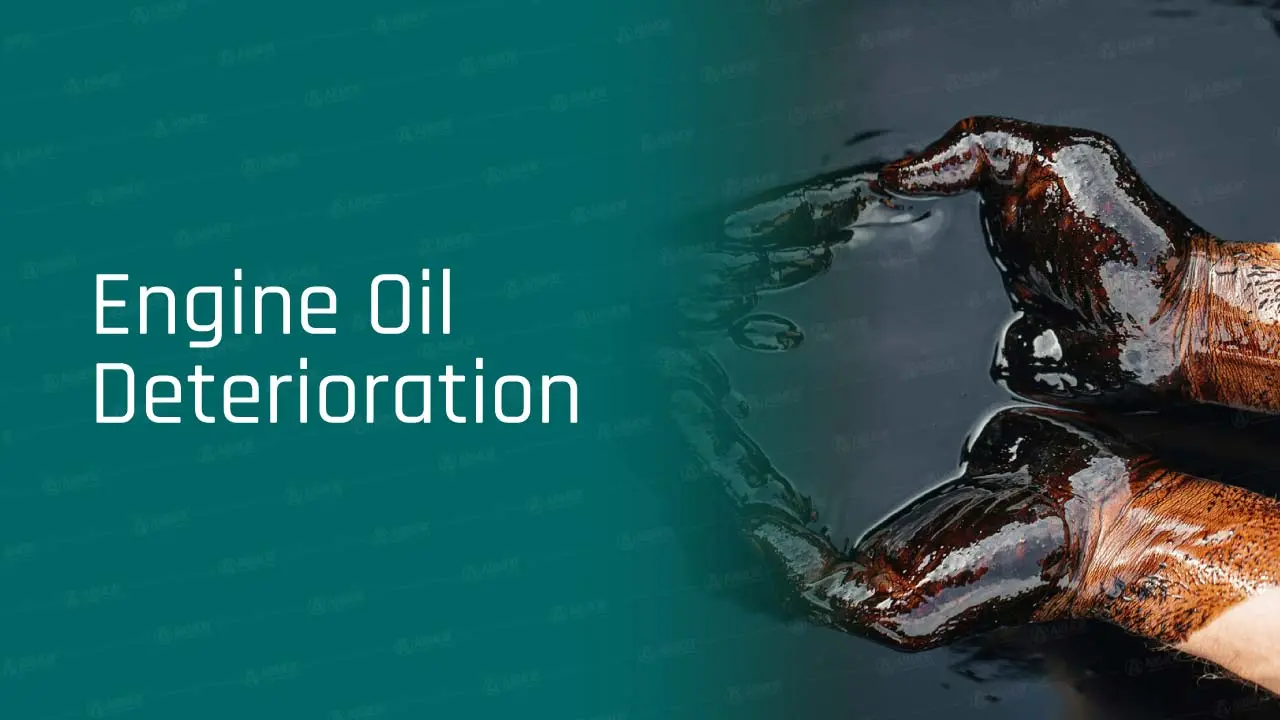
The engine’s performance and longevity depend on the right motor oil. 5W-30 motor oil is a popular, versatile choice for many vehicles and climates. This report explains 5W-30, its benefits, types, Nissan applications, and maintenance.
What Do the Numbers Mean? Decoding 5W-30 Motor Oil Viscosity
Engine oil viscosity, its resistance to flow, is crucial as it changes with temperature. Oil must flow easily when cold for startup and remain thick when hot for protection. The Society of Automotive Engineers (SAE) grades oils, with “W” indicating winter performance.
“5W-30” signifies dual-temperature performance:
- The “5W” (Winter Viscosity): “W” means “Winter.” The “5” indicates low-temperature viscosity; a lower number means the oil is more fluid in cold conditions, aiding easier starting and reducing wear.
- The “30” (Hot Viscosity): “30” represents viscosity at normal operating temperatures (around 100°C). A higher number means the oil stays thicker at high temperatures, providing better lubrication and protection.
Multi-grade oils like 5W-30 behave like thinner oil during cold starts (“5W”) and thicker oil at operating temperature (“30”). This balanced viscosity, effective from -30ºC to 35ºC, makes them versatile, eliminating seasonal oil changes.
A common misunderstanding is that “W” stands for “weight.” This misinterpretation can lead to suboptimal choices, as a 10W-30 flows less readily than a 5W-30 in cold temperatures, increasing wear during critical cold starts. Accurate understanding of oil nomenclature directly impacts engine longevity.
Manufacturer recommendations are paramount, as they meticulously engineer the optimal balance for specific engines.
| Component | Meaning | Significance | Impact on Engine |
| 5W | Cold Temperature Viscosity | How oil flows during cold starts; crucial for winter performance? | Easier starting, reduced cold-start wear, improved battery life. |
| 30 | Hot Temperature Viscosity | How oil flows at normal engine operating temperature; critical for protection? | Maintains lubricating film, reduces friction at high temperatures, protects against breakdown. |
The Versatility and Benefits of 5W-30 Motor Oil
5W-30 motor oil is widely adopted due to its versatility, effectively lubricating and protecting engine components across diverse climates, from -30ºC to 35ºC, removing the need for seasonal oil changes.
Key benefits:
- Engine Protection: Reduces friction, prevents wear, protects and extends engine life.
- Enhanced Cold Start Performance: Rapid flow during cold starts minimizes strain and wear.
- Improved Fuel Efficiency: Reduces internal engine resistance, leading to better fuel economy.
- Longer Engine Life & Cleanliness: Prevents sludge, corrosion, and overheating, extending lifespan.
- Maintaining Manufacturer Warranty: Essential to preserve warranty.
Lower viscosity 5W-30 improves fuel efficiency and reduces exhaust emissions. The “5W” aspect provides continuous, daily protection during every cold start, contributing significantly to long-term engine health.
Is 5W-30 Motor Oil Synthetic? Understanding Oil Types
“5W-30” is a viscosity grade, available as conventional, synthetic blend, and full synthetic.
- Conventional Oil: Crude oil-based, less uniform, breaks down faster. Shorter change intervals (3,000-5,000 miles).
- Synthetic Blend Oil: Mix of synthetic and conventional, offering improved performance over conventional.
- Full Synthetic Oil: Chemically engineered, uniform structure, fewer impurities. Superior thermal stability, oxidation resistance, sludge reduction. Maintains viscosity across wide temperatures. Longest change intervals (7,500-15,000+ miles).
Full synthetics offer superior performance, longer change intervals, and better protection against sludge and viscosity breakdown. The outdated 3,000-mile oil change myth is debunked; modern engines and lubricants are designed for extended service.
The myth that synthetic oils cause leaks in older engines is false. Synthetic oil’s smaller molecules reveal existing cracks or worn gaskets that conventional oil might not penetrate, indicating a pre-existing engine issue.
| Oil Type | Base Oil Composition | Key Performance Characteristics | Typical Oil Change Interval (Miles) | Cost (Relative) | Ideal Application/Benefits |
| Conventional | Crude oil base with additives. | Basic protection, breaks down faster. | 3,000-5,000 | Low | Older, less demanding engines. |
| Synthetic Blend | Mix of conventional and synthetic bases. | Improved protection, better thermal stability. | 5,000-7,500 | Medium | Good balance of value and performance. |
| Full Synthetic | Chemically engineered, highly uniform molecules. | Superior thermal stability, oxidation resistance, sludge resistance, maintains viscosity across extreme temperatures. | 7,500-15,000+ | High | Modern, high-performance, turbocharged, or heavy-duty engines; extended protection. |
Nissan Motor Oil 5W-30: Specific Requirements and Recommendations
The vehicle’s owner’s manual is the definitive source for recommended oil specifications. Adhering to these is crucial to avoid compromising engine health or voiding warranties.
Nissan recommends specific 5W-30 formulations:
- For Nissan Diesel Engines: Nissan Motor Oil Full Synthetic 5W-30 CF DPF is for diesel engines requiring SAE 5W-30, especially with Diesel Particulate Filters (DPFs). It meets API SM/CF, ACEA C4, and NISSAN DPF models, offering cleanliness, thermal stability, DPF protection, and reduced emissions.
- For Nissan Gasoline/Petrol Engines: Nissan Genuine Oil Full Synthetic 5W-30 SN/GF-5 is for gasoline/petrol engines requiring SAE 5W-30, particularly modern HR12DDR, HR12DE, and MR16DDT models. It meets API SN and ILSAC GF-5, providing cleanliness, thermal stability, fuel economy, and reduced emissions.
Both emphasize “Full Synthetic” technology for optimal engine cleanliness, thermal stability, and oxidation resistance in modern Nissan engines.
Both Nissan 5W-30 oils enhance fuel economy and minimize harmful exhaust emissions, indicating the oil’s active role in vehicle efficiency and environmental performance.
5W-30 Motor Oil Change Intervals and Checking Levels
The outdated 3,000-mile oil change is a myth. Modern oils and engines allow longer intervals: conventional oils typically 3,000-5,000 miles, synthetic blends 5,000-7,500 miles, and full synthetics 7,500-15,000+ miles. Consult the owner’s manual or oil life monitoring systems.
To check oil levels:
- Prepare: Park on a level surface, turn off engine, allow 5-10 minutes for oil to settle.
- Locate & Clean: Pull out dipstick, wipe clean.
- Check Level: Reinsert fully, pull out, check oil between min/max marks. Add oil if low.
- Assess Condition: Healthy oil is amber/transparent. Dark, gritty, or burnt-smelling oil indicates a need for change. Milky/foamy oil suggests serious issues like coolant contamination.
- Add Oil (If Needed): Slowly pour recommended oil, rechecking frequently to avoid overfilling.
Assessing the oil’s condition is as important as checking the level, as it can reveal serious engine issues early.
Debunking Common 5W-30 Motor Oil Myths
Several misconceptions about motor oil persist. Dispelling these myths is crucial for informed engine care.
- Myth 1: The “W” in 5W-30 Stands for “Weight.”
- Fact: “W” stands for “Winter,” indicating cold-temperature viscosity.
- Myth 2: You Should Change Your Oil Every 3,000 Miles.
- Fact: Outdated. Modern oils and engines allow longer intervals (7,500-15,000 miles). Consult owner’s manual.
- Myth 3: Synthetic Engine Oils Cause Leaks or Wear Down Seals.
- Fact: False. Synthetics reveal existing cracks, not cause them.
- Myth 4: Adding Supplemental Additives to Your Oil is Beneficial.
- Fact: Reputable oils are formulated. Additives can dilute effectiveness or harm. Refer to owner’s manual.
- Myth 5: Once You Use Synthetic Oil, You Can’t Switch Back to Conventional.
- Fact: False. Switching is safe; synthetic blends are mixtures of both.
- Myth 6: All Engine Oil is the Same.
- Fact: Oils differ significantly. Using the wrong type can cause damage. Match manufacturer-prescribed oil.
- Myth 7: Dark Motor Oil Means It’s Contaminated and Needs to Be Changed Immediately.
- Fact: Darkening is natural and indicates oil is working. Color alone isn’t a guide; adhere to intervals.
The persistence of myths leads to unnecessary changes, increasing costs and waste. Rely on current, authoritative sources. Modern oils are complex chemical systems; trust high-quality, reputable oils that meet OEM standards.
Conclusion: Protecting Your Investment with the Right 5W-30
Choosing the right motor oil is critical. Key takeaways for 5W-30:
- Balanced Viscosity: All-season protection for engine longevity and efficiency.
- Multifaceted Benefits: Enhanced protection, improved fuel efficiency, extended engine life.
- Understanding Oil Types: Full synthetic 5W-30 is often superior for modern engines.
- Manufacturer-Specific Requirements: Adhere to OEM recommendations for performance and warranty.
- Diligent Maintenance: Regular oil changes and level checks are non-negotiable.
- Debunking Misconceptions: Accurate information empowers informed decisions.
Select high-quality, expertly formulated Full Synthetic 5W-30 Motor Oil meeting industry and OEM requirements for optimal engine health.




